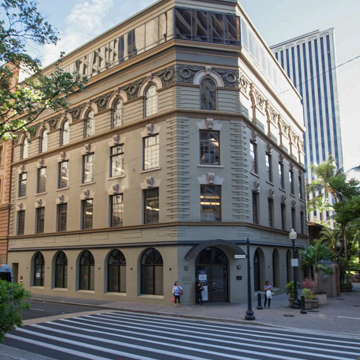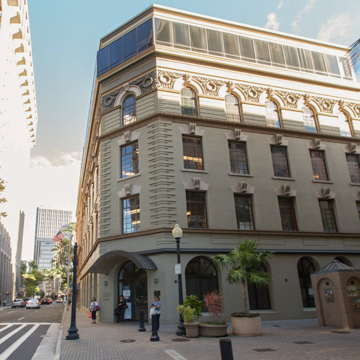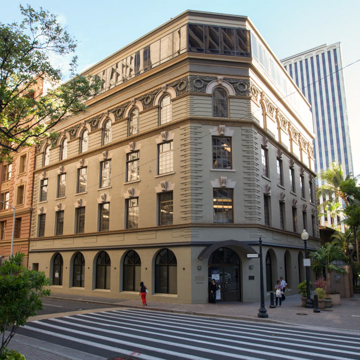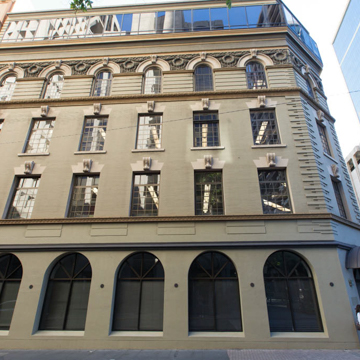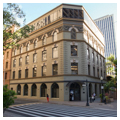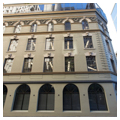Traphagan's first major commission, following his relocation to Honolulu, was this Renaissance Revival building. It presaged the rebuilding of downtown Honolulu following the Beaux-Arts dictates of America's City Beautiful movement. The Pacific Commercial Advertiser found that the building, on its opening, presented “a most dignified appearance, entirely free from any frivolity of ornament which might in any manner mitigate against its true expression as a business structure.” It followed the three-part design typical of the time, with its first-story bluestone piers carrying the upper floors' yellow brick walls, which were capped by a terra-cotta cornice. The fourth-story terra-cotta work of wreaths and swags well reflects the period, and the polished granite Ionic columns framing the Fort Street entrance add further classical dignity to the building. A fifth story was unsympathetically added to this structure between 1914 and 1925; in 1979, it was remodeled into the present solarium-like manner. The first four-story office building in Hawaii, this iron-and steel-framed building was the first in Honolulu to have a passenger elevator and a mail chute. It is also the earliest known use of terra-cotta in Hawaii.
You are here
Judd Block
If SAH Archipedia has been useful to you, please consider supporting it.
SAH Archipedia tells the story of the United States through its buildings, landscapes, and cities. This freely available resource empowers the public with authoritative knowledge that deepens their understanding and appreciation of the built environment. But the Society of Architectural Historians, which created SAH Archipedia with University of Virginia Press, needs your support to maintain the high-caliber research, writing, photography, cartography, editing, design, and programming that make SAH Archipedia a trusted online resource available to all who value the history of place, heritage tourism, and learning.







